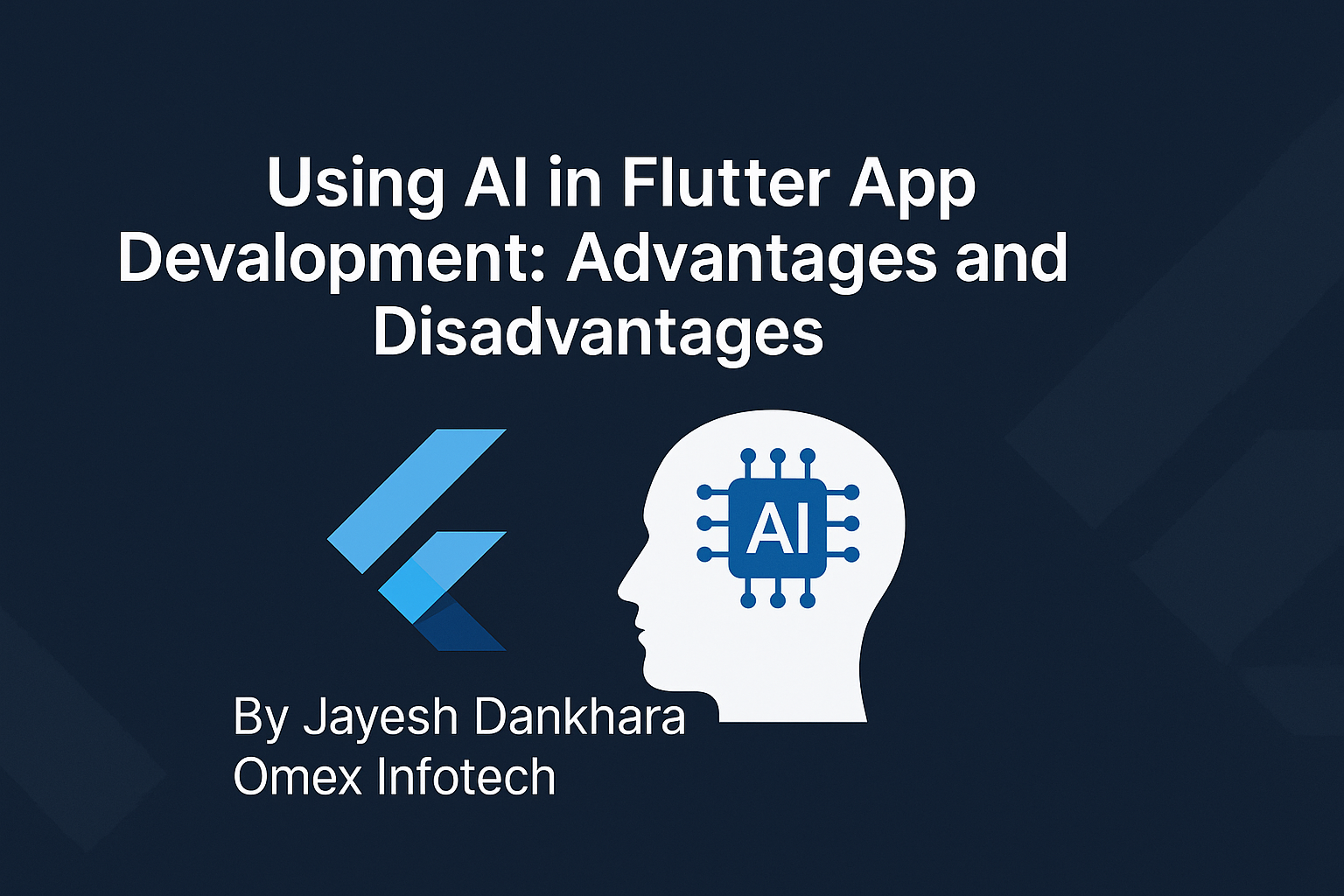
AI in Flutter App Development: Advantages and Disadvantages
Artificial Intelligence (AI) is no longer just a buzzword—it’s a practical tool transforming how mobile apps are built and used. From virtual assistants and chatbots to face detection and recommendation systems, AI is making apps smarter and more engaging.
And if you’re a Flutter developer, the good news is: you can integrate AI features without leaving the Flutter ecosystem.
In this blog, we’ll explore the benefits and drawbacks of using AI in Flutter, provide real use cases, and share tools, tips, and best practices to help you bring intelligence to your next app.
Why Use AI in Flutter?
Flutter is fast, expressive, and cross-platform. Combining it with AI helps you build apps that can:
- See (object detection, face recognition)
- Listen (speech recognition, voice commands)
- Understand (chatbots, NLP)
- Predict (recommendations, user behavior analysis)
- Adapt (personalized UX)
This synergy between Flutter’s UI power and AI’s smart capabilities is revolutionizing mobile app experiences.

Advantages of Using AI in Flutter App Development
1. Improved Personalization
AI algorithms can analyze user behavior and preferences to customize app experiences. Think Netflix-style recommendations or Spotify’s curated playlists.
💡 Example: A news app suggesting articles based on reading history using AI-driven filtering.
2. AI-Powered Interactions
Voice assistants, OCR scanners, chatbots, and gesture recognition systems bring interactive and immersive capabilities to apps—boosting engagement and usability.
🗣️ Example: Integrate Google’s speech-to-text to allow voice search in your Flutter app.
3. Cross-Platform AI Use
Flutter supports Android and iOS with one codebase. Most AI features can be implemented using shared Dart code or via plugins like:
google_ml_kittflite_flutterflutter_dialogflowflutter_openai
🔌 Tip: Use Platform Channels only for advanced native integrations.
4. Easy Cloud-Based Integration
You can leverage powerful APIs like:
- Google Cloud Vision (image recognition)
- Dialogflow (AI chatbots)
- OpenAI GPT-4 (chat, summarization, image generation)
- Firebase ML (on-device ML)
No model training needed—just plug and play.
5. Support for On-Device AI
With TensorFlow Lite, you can run AI models directly on the device. This reduces latency, works offline, and enhances privacy.
🤖 Example: Build a Flutter app that classifies plants using a
.tflitemodel.
6. Real-Time Processing Capabilities
AI enables real-time processing of images, text, and speech—for example:
- Translating text instantly from camera feed
- Real-time face detection in camera preview
- Live sentiment analysis of chat messages
❌ Disadvantages of Using AI in Flutter App Development
1. Performance and Resource Constraints
AI models, especially for image or video processing, can be heavy on:
- CPU/GPU
- Battery
- Memory
Poor optimization may lead to laggy or crashing apps on budget phones.
2. Limited Plugin Ecosystem
Some AI tools or libraries may not have Flutter wrappers. You might need to:
- Write native code
- Handle async communication via Platform Channels
- Manually bridge AI models from Android/iOS SDKs
3. Dependency on Internet (for Cloud AI)
Cloud APIs like OpenAI or Dialogflow:
- Need constant internet
- May introduce response delays
- Come with usage limits and pricing tiers
🔐 Pro Tip: Always plan offline fallbacks for core app functionality.
4. Privacy & Data Security
AI apps often process sensitive data:
- Images, voice, personal messages
- Face recognition or biometric info
You must ensure:
- GDPR/CCPA compliance
- Proper encryption (especially for cloud-based APIs)
- Secure API key management
5. Model Management Complexity
Using on-device AI requires:
- Model training or sourcing
- Converting to
.tflite - Optimizing for mobile
- Managing updates and versioning
This might be overkill for beginner projects.
💡 Real-World Use Cases: Flutter + AI
| Use Case | AI Tool | Flutter Plugin |
|---|---|---|
| Chatbot | OpenAI, Dialogflow | flutter_dialogflow, flutter_openai |
| Face Detection | Google ML Kit | google_ml_kit |
| Image Classification | TensorFlow Lite | tflite_flutter |
| OCR (Text Recognition) | Google ML Kit | google_ml_kit |
| Voice Assistant | Google Speech-to-Text | speech_to_text |
| Sentiment Analysis | OpenAI, custom NLP | REST APIs or fine-tuned models |
🛠️ Best Tools & Plugins for AI in Flutter
google_ml_kit: Easy-to-use ML tools like face detection, barcode scanning, etc.flutter_tflite: Load custom TensorFlow Lite modelsflutter_dialogflow: Integrate Dialogflow conversational agentsflutter_openai: Use ChatGPT, GPT-4, DALL·E in your appsspeech_to_text: Convert voice to text
Beginner Tips to Start with AI in Flutter
- Start with cloud-based APIs like OpenAI or Firebase ML before jumping to custom models.
- Use pre-trained models to avoid training your own.
- Avoid heavy AI features in MVPs—validate need first.
- Implement loading indicators to handle AI response delays gracefully.
- Always test performance on low-end devices.
The Future of AI in Flutter
- Integration with MediaPipe for pose detection and gesture recognition
- On-device fine-tuning for personalization
- AutoML tools to create custom models easily
- Flutter AI SDKs for AR, recommendation engines, and generative AI
Concluding now,
AI is a powerful ally in mobile app development, and Flutter makes it approachable even for solo developers. From building intelligent chatbots to integrating real-time face detection, the opportunities are endless.
However, every AI feature comes with trade-offs—performance, complexity, privacy. Use AI where it adds real value, not just as a trend.


